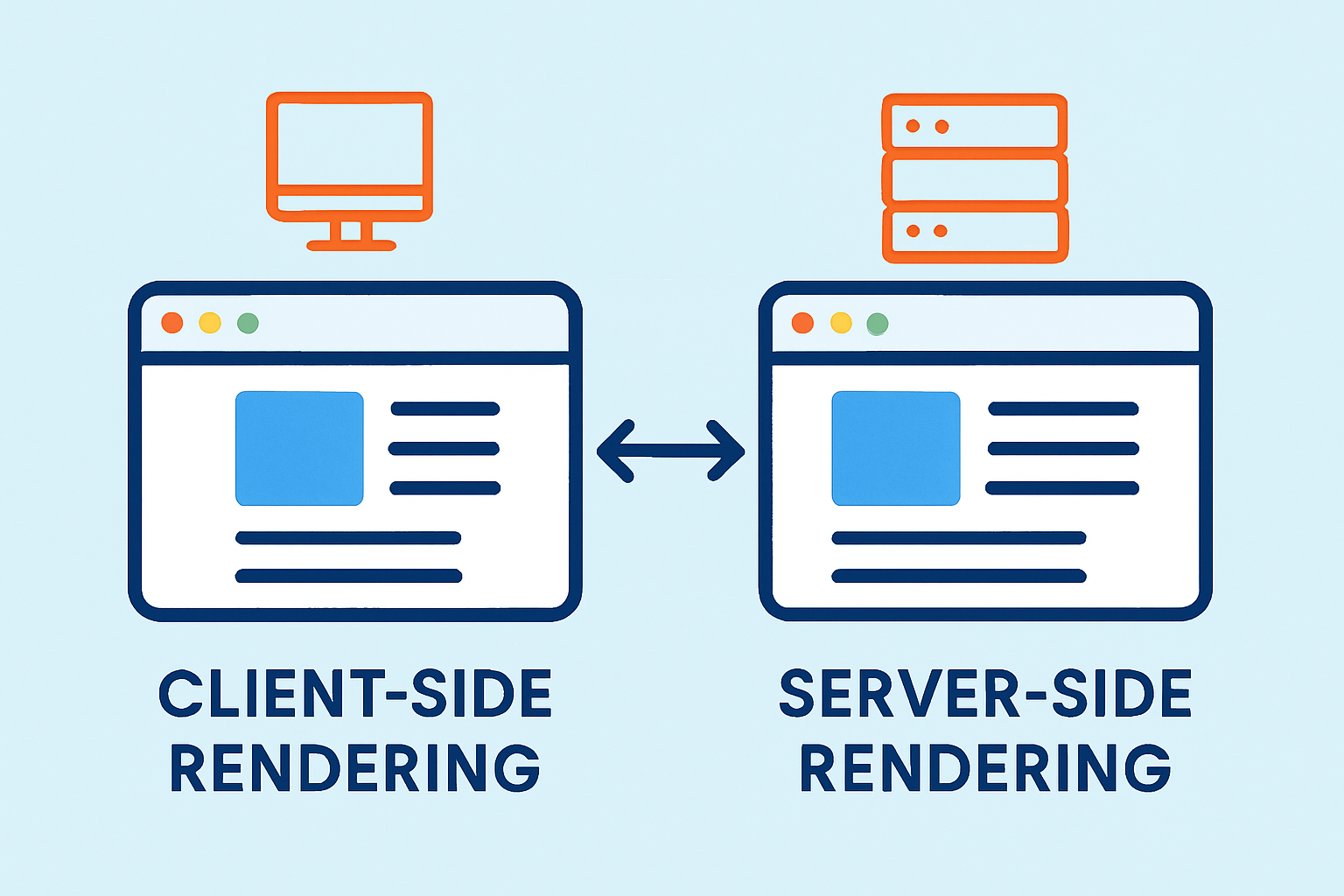
The Benefits of Server-Side Rendering for Content Optimization
Discover why server-side rendering (SSR) is a powerful tool for speeding up web pages, boosting SEO,...

Single Page Applications (SPAs) are revolutionizing how websites deliver content, but they present unique challenges for single page application search engine optimization. These dynamic, fast-paced sites provide smoother user experiences that users now expect, while also throwing a curveball at traditional SEO methods.
A Single Page Application is a type of website or web app that refreshes its content dynamically within a single page instead of loading brand new pages from the server every time you click around. This approach usually makes for a much smoother, almost native app-like experience that just feels more seamless.
Search Engine Optimization (SEO) is about boosting a website's visibility and making it attractive to search engines like Google. When a site is well-optimized it’s more likely to achieve higher rankings in search results which usually means a jump in organic visitors. SEO uses strategies to help search engines get a clearer picture of your content.
Let’s face it, SEO and Single Page Applications (SPAs) do not always see eye to eye. While SPAs offer slick, seamless user experiences that feel like magic, they tend to throw a wrench in traditional SEO strategies. Crawlers sometimes stumble over dynamic content that loads on the fly, making it tricky for search engines to get the full picture. So, if you’re diving into SPAs, brace yourself for a bit of a dance—balancing smooth UX with the tough SEO realities that come with it.
SPAs often stumble into some unique SEO headaches because much of their content pops up through JavaScript only after the page has initially loaded. This quirk can make it trickier for search engine crawlers to properly access and index the content. On top of that, SPAs usually rely on dynamically generated URLs which can throw search engines off their game and hurt their chances of ranking higher.
Optimizing SEO for SPAs might seem like solving a Rubik’s Cube blindfolded but it doesn’t have to be that complicated. Even if you’re just getting your feet wet, you can make meaningful strides by focusing on key areas like server-rendered content, thoughtful metadata management and giving your site speed a much-needed boost.
Set up server-side rendering (SSR) to serve fully rendered HTML pages directly to search engines and users.
Use pre-rendering tools to create static HTML snapshots for your key pages to help speed things up when it matters.
Dynamically update page titles, meta descriptions and structured data for each view so everything feels fresh and accurate.
Boost page load speed by trimming down JavaScript and using lazy loading.
Ensure your URLs follow a clear hierarchy and remain crawlable by avoiding hash fragments because this detail makes a big difference for search engines.
Server-Side Rendering is all about whipping up the full HTML content on the web server before it even lands in the browser. Unlike client-side rendering which you will often see in SPAs, SSR hands over the complete content upfront to search engines. This gives your site a leg up with better crawling and, fingers crossed, higher rankings.

Visual comparison of client-side rendering and server-side rendering illustrating how each method loads and displays content.
Pre-rendering tools whip up static HTML snapshots of your SPA pages ahead of time. These snapshots serve content to search engines in a flash, all without the hassle of setting up full-blown server-side rendering.
To make sure search engines really get what each SPA view is about it is a good idea to update titles, meta descriptions and structured data on the fly as users navigate through your app. Doing this not only keeps things fresh but also gives search engines a better shot at showing accurate info in the search results
Pages that load quickly boost user experience and improve your search rankings. Performance improves when you break your code into bite-sized pieces, load images only when needed and compress your files.
Search engines generally give a thumbs up to URLs that are clear and descriptive, laying out the structure of your content like a well-organized roadmap. Using modern routing techniques like the History API lets you build URLs without those pesky hash fragments cluttering things up.
Beginner developers often overlook important SEO details when building SPAs. It is common to assume search engines will flawlessly handle all the JavaScript behind the scenes. Then there’s the usual slip-up of forgetting to update metadata, not considering mobile friendliness, or skipping tests with SEO tools.
Beginner-friendly SEO tools can be a real lifesaver when you're tackling single page application search engine optimization. They dig into site performance and spot SEO hiccups while handing you clear no-nonsense tips on what needs a tune-up.

Discover why server-side rendering (SSR) is a powerful tool for speeding up web pages, boosting SEO,...

Streamline your SEO workflows with the top project management software reviewed here, designed to he...

Soft 404 errors can mislead search engines and harm your SEO. This guide explains soft 404s in simpl...

Unlock your restaurant's potential with effective SEO strategies tailored to local search. Learn how...